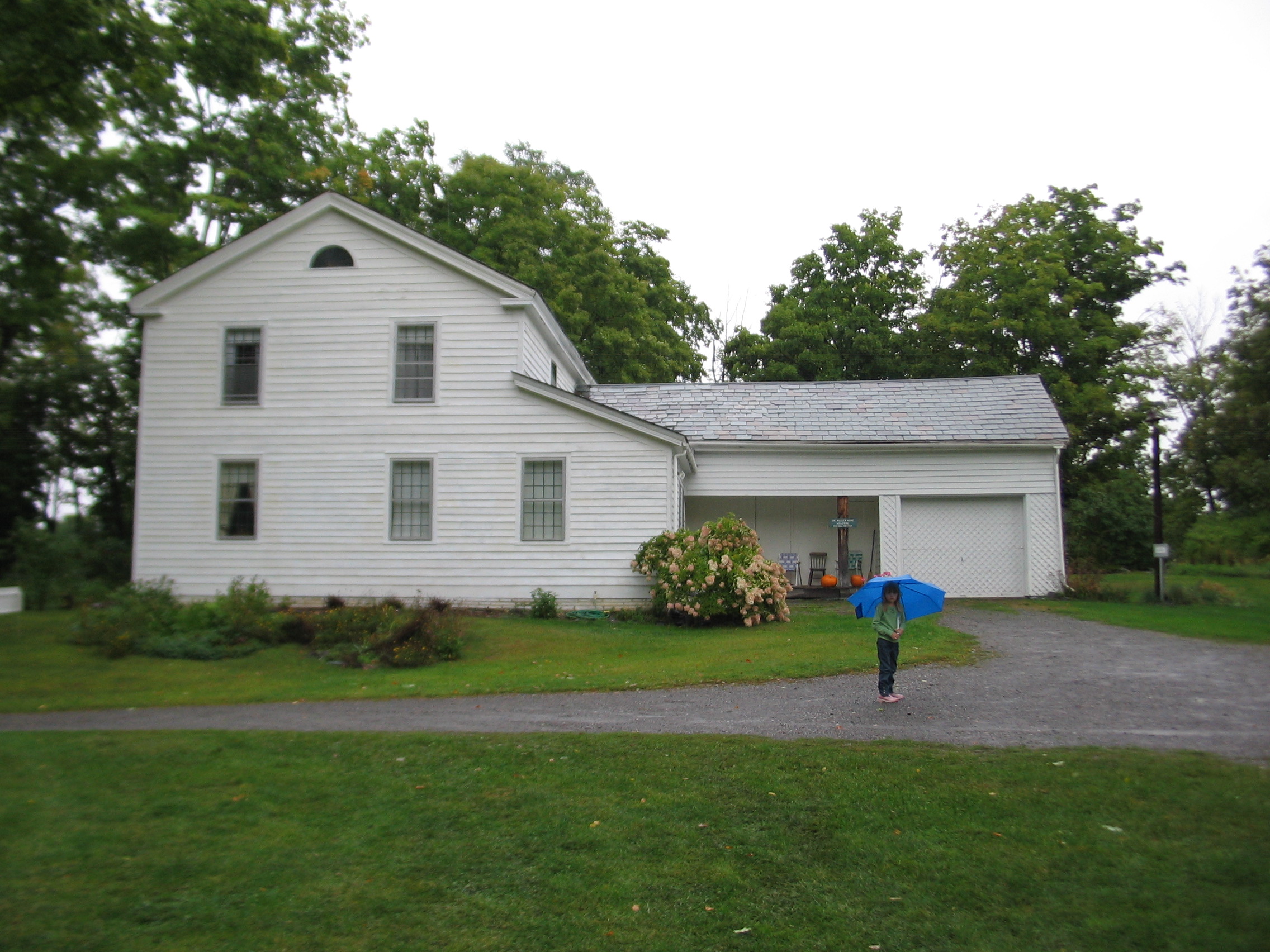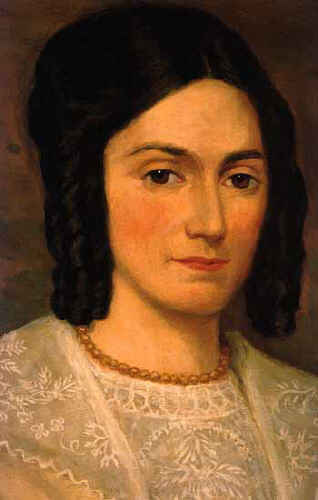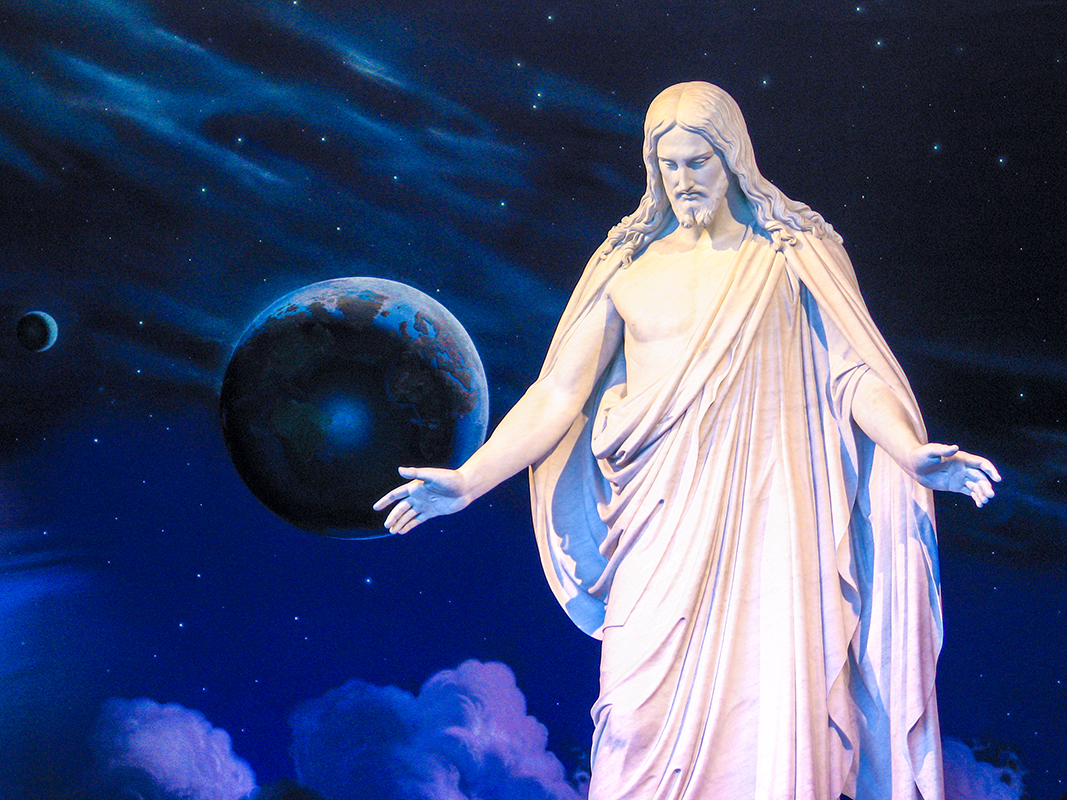|
Burned-over District
The term "burned-over district" refers to the western and parts of the central regions of New York State in the early 19th century, where religious revivals and the formation of new religious movements of the Second Great Awakening took place, to such a great extent that spiritual fervor expanded like a forest fire. Charles Grandison Finney (1792–1875) popularized the term: his posthumous 1876 book ''Autobiography of Charles G. Finney'' referred to a "burnt district" to denote an area in central and western New York State during the Second Awakening: I found that region of country what, in the western phrase, would be called, a "burnt district." There had been, a few years previously, a wild excitement passing through that region, which they called a revival of religion, but which turned out to be spurious. ... It was reported as having been a very extravagant excitement; and resulted in a reaction so extensive and profound, as to leave the impression on many minds that r ... [...More Info...] [...Related Items...] OR: [Wikipedia] [Google] [Baidu] |
Burnt District, Omaha
The Burnt District was the original red light district in Omaha, Nebraska in the late 19th century. The area was located east of Creighton University from Douglas Street six blocks north to Cass Street and from the Missouri River west to Sixteenth Street, centered around the area currently containing Pioneer Courage Park. It was the location of several notorious brothels, with more than 100 establishments employing 1,600 sex workers.Bristow, D. (1997) ''A Dirty, Wicked Town: Tales of 19th Century Omaha.'' Caxton Press. Particularly popular during a depression which struck Omaha in the 1890s, the Burnt District was a predecessor of Tom Dennison's Sporting District. Omaha's Burnt District was a particular area of downtown where most of the city's brothels were located. The most notorious of the brothels was called "the Cribs", and consisted of rows of shacks with alleyways filled with young girls. Contemporary estimates placed the number of sex workers at over 1,600 women. A man ... [...More Info...] [...Related Items...] OR: [Wikipedia] [Google] [Baidu] |
Clergy
Clergy are formal leaders within established religions. Their roles and functions vary in different religious traditions, but usually involve presiding over specific rituals and teaching their religion's doctrines and practices. Some of the terms used for individual clergy are clergyman, clergywoman, clergyperson, churchman, cleric, ecclesiastic, and vicegerent while clerk in holy orders has a long history but is rarely used. In Christianity, the specific names and roles of the clergy vary by denomination and there is a wide range of formal and informal clergy positions, including deacons, elders, priests, bishops, cardinals, preachers, pastors, presbyters, ministers, and the pope. In Islam, a religious leader is often known formally or informally as an imam, caliph, qadi, mufti, sheikh, mullah, muezzin, and ulema. In the Jewish tradition, a religious leader is often a rabbi (teacher) or hazzan (cantor). Etymology The word ''cleric'' comes from the ecclesia ... [...More Info...] [...Related Items...] OR: [Wikipedia] [Google] [Baidu] |
William Miller (preacher)
William Miller (February 15, 1782 – December 20, 1849) was an American clergyman who is credited with beginning the mid-19th-century North American religious movement known as Millerism. After his proclamation of the Second Coming did not occur as expected in the 1840s, new heirs of his message emerged, including the Advent Christian Church, Advent Christians (1860), the Seventh-day Adventist Church, Seventh-day Adventists (1863) and other Adventist movements. Early life William Miller was born on February 15, 1782, in Pittsfield, Massachusetts. His parents were Captain William Miller, a veteran of the American Revolution, and Paulina. When he was four years old, his family moved to rural Low Hampton, New York. Miller was educated at home by his mother until the age of nine, when he attended the newly established East Poultney District School. As a youth, he had access to the private libraries of James Witherell, Judge James Witherell and Congressman Matthew Lyon in nearby F ... [...More Info...] [...Related Items...] OR: [Wikipedia] [Google] [Baidu] |
Millerites
The Millerites were the followers of the teachings of William Miller, who in 1831 first shared publicly his belief that the Second Advent of Jesus Christ would occur in roughly the year 1843–1844. Coming during the Second Great Awakening, his teachings were spread widely and grew in popularity, which led to the event known as the Great Disappointment. Origins Miller was a prosperous farmer, a Baptist lay preacher, and student of the Bible living in northeastern New York. He spent years of intensive study of symbolic meaning of the prophecies of Daniel, especially Daniel 8:14 (Unto two thousand and three hundred days; then shall the sanctuary be cleansed), the 2,300-day prophecy.. Miller believed that the cleansing of the sanctuary represented the Earth's destruction by fire at Christ's Second Coming. Using the year-day method of prophetic interpretation, Miller became convinced that the 2,300-day period started in 457 BC with the decree to rebuild Jerusalem by Arta ... [...More Info...] [...Related Items...] OR: [Wikipedia] [Google] [Baidu] |
Palmyra (town), New York
Palmyra () is a town in southwestern Wayne County, New York, United States. The population was 7,975 at the 2010 census. The town is named after the ancient city Palmyra in Syria. The town contains a village also named Palmyra. The town is about southeast of Rochester, New York. History The prehistoric Adena culture left mounds in the area. Palmyra was part of the Phelps and Gorham Purchase. The Town of Palmyra, originally called "Swift's Landing" after its founder John Swift and "District of Tolland," was created in 1789. The sole local encounter between natives and white settlers that resulted in deaths occurred that same year. The present name was adopted in 1796, reportedly to impress a new school teacher. There were almost one thousand people in the town in 1800. The Erie Canal was completed up to Palmyra in 1822, although the canal was not completed to its western terminus until 1825. Palmyra is part of the Erie Canalway National Heritage Corridor. In 1823, the T ... [...More Info...] [...Related Items...] OR: [Wikipedia] [Google] [Baidu] |
Golden Plates
According to Latter Day Saint belief, the golden plates (also called the gold plates or in some 19th-century literature, the golden bible) are the source from which Joseph Smith translated the Book of Mormon, a sacred text of the faith. Some accounts from people who reported handling the plates describe the plates as weighing from , gold in color, and composed of thin metallic pages engraved with hieroglyphics on both sides and bound with three D-shaped rings. Smith said that he found the plates on September 22, 1823, on a hill near his home in Manchester, New York, after the angel Moroni directed him to a buried stone box. He said that the angel prevented him from taking the plates but instructed him to return to the same location in a year. He returned to that site every year, but it was not until September 1827 that he recovered the plates on his fourth annual attempt to retrieve them. He returned home with a heavy object wrapped in a frock, which he then put in a box. He ... [...More Info...] [...Related Items...] OR: [Wikipedia] [Google] [Baidu] |
Book Of Mormon
The Book of Mormon is a religious text of the Latter Day Saint movement, first published in 1830 by Joseph Smith as ''The Book of Mormon: An Account Written by the Hand of Mormon upon Plates Taken from the Plates of Nephi''. The book is one of the earliest and most well-known unique writings of the Latter Day Saint movement. The List of denominations in the Latter Day Saint movement, denominations of the Latter Day Saint movement typically regard the text primarily as scripture (sometimes as one of standard works, four standard works) and secondarily as a record of God's dealings with ancient inhabitants of the Americas. The majority of Latter Day Saints believe the book to be a record of real-world history, with Latter Day Saint denominations viewing it variously as an inspired record of scripture to the Linchpin#Metaphorical use, linchpin or "Keystone (architecture)#Metaphor, keystone" of their religion. Independent archaeological, historical, and scientific communities have d ... [...More Info...] [...Related Items...] OR: [Wikipedia] [Google] [Baidu] |
Moroni (Book Of Mormon Prophet)
Moroni () is described in the Book of Mormon as the last Nephite prophet, historian, and military commander who, according to the faith of the Latter Day Saint movement, became the Angel Moroni who presented the golden plates to Joseph Smith. Synopsis In the Book of Mormon, Moroni is the son of Mormon. Moroni shares a name with Captain Moroni, a much earlier Book of Mormon figure, of whom Mormon wrote highly. Moroni works under his father, the commander in chief of a Nephite army, who battles against the Lamanites. Upon the Nephites' defeat at Cumorah, Moroni goes into hiding to avoid being killed by the Lamanites. Instructed by his father to complete the Nephite record, which Mormon had abridged from previous records, Moroni narrates chapters 8 and 9 of Mormon's record in the larger Book of Mormon, the Book of Moroni, and the Book of Ether. Upon completion of the record, Moroni buries the plates. Angel figure In Latter Day Saint belief, Moroni was resurrected after hi ... [...More Info...] [...Related Items...] OR: [Wikipedia] [Google] [Baidu] |
Joseph Smith
Joseph Smith Jr. (December 23, 1805June 27, 1844) was an American religious and political leader and the founder of Mormonism and the Latter Day Saint movement. Publishing the Book of Mormon at the age of 24, Smith attracted tens of thousands of followers by the time of his death fourteen years later. The religious movement he founded is followed by millions of global adherents and several churches, the largest of which is the Church of Jesus Christ of Latter-day Saints (LDS Church). Born in Sharon, Vermont, Smith moved with his family to Western New York, following Year Without a Summer, a series of crop failures in 1816. Living in an area of intense religious revivalism during the Second Great Awakening, Smith reported experiencing a series of visions. The First Vision, first of these was in 1820, when he saw "two personages" (whom he eventually described as God the Father and Jesus Christ). In 1823, he said he was visited by Angel Moroni, an angel who directed him to a ... [...More Info...] [...Related Items...] OR: [Wikipedia] [Google] [Baidu] |
The Church Of Jesus Christ Of Latter-day Saints
The Church of Jesus Christ of Latter-day Saints, informally known as the LDS Church or Mormon Church, is a Nontrinitarianism, nontrinitarian Restorationism, restorationist Christianity, Christian Christian denomination, denomination and the largest List of denominations in the Latter Day Saint movement, denomination in the Latter Day Saint movement. Founded during the Second Great Awakening, the church is headquartered in Salt Lake City, Utah, and has established congregations and built Temple (LDS Church), temples worldwide. According to the church, , it has over 17.5 million The Church of Jesus Christ of Latter-day Saints membership statistics, members, of which Membership statistics of the Church of Jesus Christ of Latter-day Saints (United States), over 6.8 million live in the U.S. The church also reports over 109,000 Missionary (LDS Church), volunteer missionaries and 202 dedicated List of temples of the Church of Jesus Christ of Latter-day Saints, temples. Th ... [...More Info...] [...Related Items...] OR: [Wikipedia] [Google] [Baidu] |
Latter Day Saint Movement
The Latter Day Saint movement (also called the LDS movement, LDS restorationist movement, or Smith–Rigdon movement) is the collection of independent church groups that trace their origins to a Christian Restorationist movement founded by Joseph Smith in the late 1820s. Collectively, these churches have over 17 million nominal members, including over 17 million belonging to the Church of Jesus Christ of Latter-day Saints (LDS Church), 250,000 in Community of Christ, and several other denominations with memberships generally ranging in the thousands of members. The predominant theology of the churches in the movement is Mormonism, which sees itself as restoring again on Earth the Early Christianity, early Christian church; their members are most commonly known as Mormons. An additional doctrine of the church allows for prophets to receive and publish modern-day Revelation (Latter Day Saints), revelations. A minority of Latter Day Saint adherents, such as members of C ... [...More Info...] [...Related Items...] OR: [Wikipedia] [Google] [Baidu] |
Laity
In religious organizations, the laity () — individually a layperson, layman or laywoman — consists of all Church membership, members who are not part of the clergy, usually including any non-Ordination, ordained members of religious orders, e.g. a nun or a lay brother. In secular usage, by extension, a layperson is a person who is not qualified in a given profession or is not an expert in a particular field. The phrase "layman's terms" is used to refer to plain language that is understandable to the everyday person, as opposed to specialised terminology understood only by a professional. Terms such as ''lay priest'', ''lay clergy'' and ''lay nun'' were once used in certain Buddhist cultures, especially Japanese, to indicate ordained persons who continued to live in the wider community instead of retiring to a monastery. Some Christian churches utilise lay preachers, who sermon, preach but are not clergy. The Church of Jesus Christ of Latter-day Saints uses the term ''lay pri ... [...More Info...] [...Related Items...] OR: [Wikipedia] [Google] [Baidu] |








